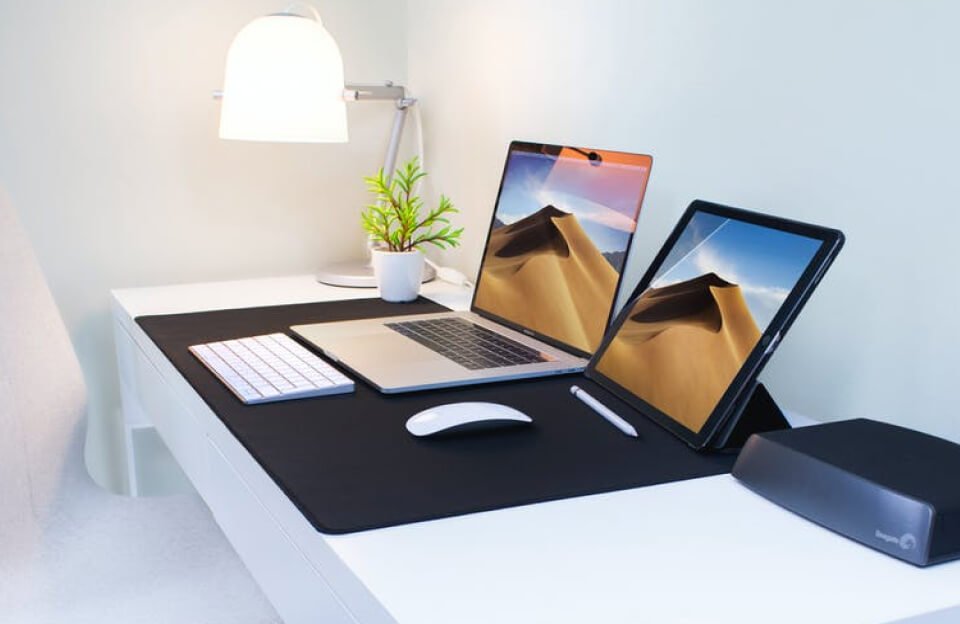Introduction
Running macOS and Windows 10 on the same computer lets you use both operating systems on a single machine — no second device required. Whether for development, gaming, design, or compatibility testing, dual‑OS setups are increasingly popular.
This guide shows you how to dual boot or virtualize Windows 10 on a Mac, compare methods, and choose the best option based on your hardware.
Dual Boot with Boot Camp: Install Windows 10 Natively on a Mac
Dual booting macOS and Windows 10 means installing both operating systems on your Mac so you can choose which one to run at startup. Apple’s Boot Camp Assistant makes this possible on Intel‑based Macs.
Boot Camp installs Windows directly onto your Mac’s hard drive, enabling full performance — especially for gaming, 3D work, and Windows-only apps.
Requirements for Boot Camp
- Intel Mac (Boot Camp doesn’t work on M1/M2 chips)
- Windows 10 ISO file (download from Microsoft)
- At least 64 GB free storage (128 GB recommended for smooth operation)
- macOS Boot Camp Assistant (built into macOS Utilities folder)
How to Set Up Boot Camp
- Open Boot Camp Assistant on your Intel Mac.
- Insert or locate your Windows 10 ISO file.
- Allocate disk space for Windows.
- Let Boot Camp partition the disk and install Windows.
- Complete the Windows setup and install Boot Camp drivers.
Pros of Boot Camp
- Full native performance (perfect for high-end tasks or gaming)
- Direct access to hardware (GPU, CPU, RAM)
- No emulation or virtual layers
Cons of Boot Camp
- Requires restarting to switch OS.
- Fixed partition size unless manually resized.
- Not available on Apple Silicon Macs (M1, M2, M3 chips).
Use Virtual Machines to Run Windows 10 Inside macOS
Virtualization lets you run Windows 10 as a guest OS inside macOS, using software like Parallels Desktop, VMware Fusion, or VirtualBox. This allows you to switch between macOS and Windows without rebooting.
Virtual machines are perfect for tasks like office apps, testing, light development, and cross-platform compatibility.
Top Virtual Machine Options
- Parallels Desktop: Best for Apple Silicon, seamless macOS integration.
- VMware Fusion: Strong enterprise features, works on Intel Macs.
- VirtualBox: Free, open-source, but less optimized for macOS.
Pros of Virtualization
- Run both macOS and Windows at once — great for multitasking.
- No need to reboot — switch OSes instantly.
- Easy file sharing and integration between systems.
Cons of Virtualization
- Slightly lower performance than native installs.
- Not ideal for heavy gaming or graphics-heavy apps.
- Requires more RAM and CPU power to run both systems smoothly.
Common Questions Answered (FAQ)
Q: Can I run macOS and Windows 10 on the same computer at the same time?
Yes. Virtual machines allow you to run both OSes simultaneously. Tools like Parallels or VMware let you switch instantly. Boot Camp requires a reboot.
Q: Is Boot Camp better than Parallels for running Windows 10 on a Mac?
Boot Camp offers better raw performance, ideal for gaming or demanding apps. Parallels is more convenient for multitasking but may run slower.
Q: Can I run Windows 10 on Apple Silicon Macs?
Yes, but only through virtualization. Boot Camp doesn’t work on M1 or M2 chips. You’ll need Windows 10/11 for ARM using Parallels on Apple Silicon.
Q: How much storage do I need to dual boot macOS and Windows 10?
At least 64 GB for the Windows partition. More is better — 128 GB gives space for apps, updates, and files.
Q: Is it legal to run macOS on a Windows PC (Hackintosh)?
Technically, no. Installing macOS on non-Apple hardware violates Apple’s EULA. It’s possible with a Hackintosh, but it’s complex, unsupported, and legally grey.
Q: What’s the best way to run Windows-only apps on a Mac?
Use Parallels or VMware Fusion for quick access. If you need maximum performance (e.g. for Adobe or CAD tools), Boot Camp on an Intel Mac is better.
Q: Can I use Boot Camp and Parallels together?
Yes, some users install Windows with Boot Camp and access that same install through Parallels. This gives flexibility: full performance or easy access.
How to Set It Up: Step-by-Step Instructions
For Boot Camp (Intel Macs Only)
- Back up your Mac using Time Machine or a cloud solution.
- Open Boot Camp Assistant from Applications > Utilities.
- Choose the Windows ISO, allocate partition size.
- Follow prompts to install Windows.
- On first Windows boot, install Boot Camp drivers.
Switch between OSes by holding the Option key at startup.
For Virtual Machines (Apple Silicon or Intel)
- Install Parallels Desktop or VMware Fusion.
- Download a Windows 10 ISO (or Windows for ARM on Apple Silicon).
- Create a new VM → allocate CPU, RAM, and disk space.
- Start the VM and complete Windows setup.
You can now run macOS and Windows at the same time, in separate windows or in Coherence Mode (macOS-style integration).
Boot Camp vs Virtualization: Which Should You Use?
Boot Camp is best if you want native speed, especially for games, video editing, or software that pushes the hardware.
Virtualization is best if you prioritize ease of access, multitasking, or run mostly macOS with occasional Windows use.
On Apple Silicon Macs, virtualization is the only option — Boot Camp is not supported. Parallels is the most reliable for M1/M2 chips.
Conclusion
Running macOS and Windows 10 on the same computer is a practical and powerful setup for anyone needing cross-platform flexibility. Whether you dual boot with Boot Camp on Intel Macs or use virtualization like Parallels or VMware, both approaches have strengths.
To recap:
- Use Boot Camp for performance-heavy tasks.
- Use Parallels or VMware for flexibility and fast switching.
- Know your Mac’s chipset: Intel supports both; Apple Silicon only supports virtualization.
Make sure you have sufficient RAM and disk space, and always back up before installing a second OS.
By following this guide, you can confidently set up a system that leverages the best of both macOS and Windows 10 — no compromises required.


